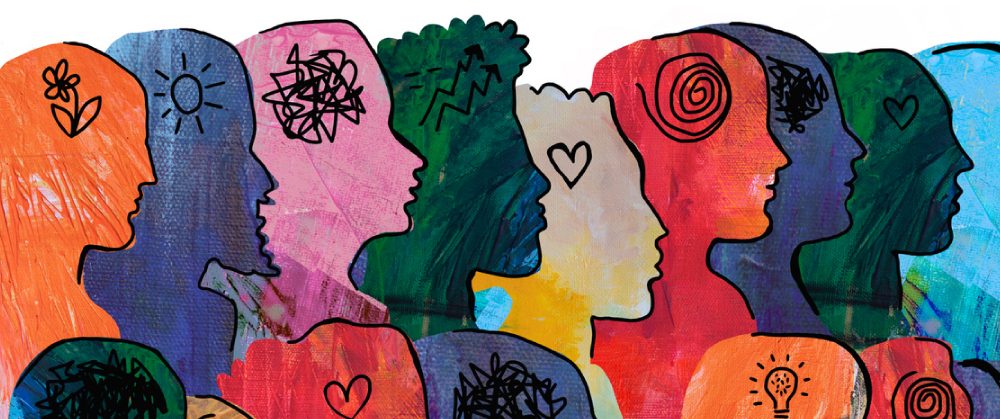Opposing views continue to exist regarding the value of including racial and ethnic identities when considering academic and professional opportunities—even up to the level of the Supreme Court.
Despite the persisting prevalence of these diametric views about diversity, equity, and inclusion, the following realities remain:
- We continue to see adverse effects of the inequities in health care and education that still exist—and that historically have existed—in our society.
- We need a professional workforce that can serve our diverse society—not only with excellent clinical and technical skills but also with empathy, compassion, and inclusive practices.
- We as a communication sciences and disorders (CSD) discipline are experiencing an ongoing and unfortunate reality—the underrepresentation of diverse racial and ethnic groups in our professions and in our academic programs.
Why Is It Important To Have Diversity Within CSD Faculty?
Research has shown that faculty diversity benefits the entire campus. Engaging with faculty members from a wide range of diverse backgrounds provides opportunities to encounter different perspectives, which builds empathy, fosters respect for others, encourages creativity, and increases problem-solving skills.
Bitar and colleagues (2022) [PDF] noted that faculty diversity positively impacts student completion, sense of belonging, retention, and persistence—especially for Black, Hispanic/Latine students. In addition, students from underrepresented racial and ethnic groups benefit from more opportunities to interact with role models, engage in mentoring, and feel a sense of belonging.
In the CSD discipline, having more diversity among our faculty broadens students’ experiences and exposure to different identities, narratives and counternarratives, especially when it comes to being aware of inequities and disparities in health care and education.
What Is the Current Diversity of CSD Faculty?
CSD programs have seen some increases in numbers of students from historically underrepresented racial and ethnic groups (HUREGs). According to data from the 2022 ASHA CSD Education Survey [PDF], although the percentage of CSD students from HUREGs is still lower than 2020 U.S. Census percentages, the gap is steadily decreasing across all CSD academic program types (i.e., undergraduate, clinical graduate, research doctorate)—with the smallest gap being in CSD undergraduate programs.
According to ASHA 2022 Member and Affiliate Profile data (ASHA, 2023a) [PDF], the percentage of all ASHA members from HUREGs is changing more slowly as new graduates enter the professions—but a steady upward trend is evident. As the numbers of students from HUREGs increase, academic programs need to create more inclusive environments. One of the ways in which academic programs can create more inclusive learning environments is by increasing the diversity of CSD faculty—which remains very low (ASHA, 2023b)
What Are Best Practices for Achieving Faculty Diversity?
Research shows that what we’re doing is not making a significant impact (Matias et al., 2022). We need to use a persistent, robust, and multifaceted approach across institutions. We also need to be mindful that addressing faculty diversity is not just about increasing the number of people of color. We must also change the policies, climate, and culture of organizations that have maintained the status quo for so long (Ellsworth et al., 2022).
In his 2021 book, The Conversation: How Seeking and Speaking the Truth About Racism Can Radically Transform Individuals and Organizations, Dr. Robert Livingston explains that change needs to occur at three levels:
- individual
- cultural/social
- institutional
We need to address all three levels simultaneously and persistently.
Working at an Individual Level
Many of the folks from historically marginalized groups have been doing this work at an individual level for years, often shouldering this as an invisible burden while simultaneously bearing the additional burden of racism and microaggressions.
I’m not asking folks who are already feeling burdened to do more—but unfortunately, institutions often do. However, for those who have not taken this on and are concerned about increasing faculty diversity, this message is for you.
As an individual, you engage in self-regulation—as it relates to biases, decisions, and behaviors—on an everyday basis. When you are working at an individual level, you can be effective in providing a foundation for change by
- increasing your own awareness and education,
- speaking out and speaking up,
- using microaffirmations instead of microaggressions, and
- supporting others.
Working at a Cultural/Social Level
When working at a cultural/social level, we regulate our behaviors through societal norms, expectations, and values. Creating a climate and culture that is inclusive, equitable, and welcoming is an important factor in recruiting and retaining faculty—and in creating a diverse, well-populated pipeline. This is what we as a society must strive for.
When working at a cultural/social level, consider the following questions:
- What’s the norm in the group (department, program, college)? Is bias tolerated and met with shoulder shrugs, or are people called out—or called in—for harmful behavior?
- Is support and encouragement the norm?
- Is there space and affirmation for people of different identities (especially those from historically marginalized groups)?
- Will a potential future faculty member (graduate student, job applicant) see a social climate in which they would be eager to work?
Working at an Institutional Level
When working at the institutional level, we regulate our behaviors through policies, rules, incentives, sanctions, and laws. Power and positionality play a pivotal role at all levels—but they occur most significantly here.
Leaders set priorities, put leaders in place, and provide resources. The “institution” can be the university, but colleges and departments also have some power in establishing or changing processes and policies.
Academic programs can work at this institutional level by addressing the following four areas:
1. Recruitment and Search Outreach
Use intentionality in creating diverse pools of job applicants. This can include true partnerships with feeder programs and outreach to specialized student and professional organizations.
2. Search Committee Training and Process
Establish consistent procedures across campus that reflect best practices for equitable processes—and provide mandatory training.
Assign trained individuals to participate in searches as process experts1 who will work to ensure equitable practices.
3. Faculty Supports for Retention
Provide consistent faculty mentoring. Include basic training and support so that you equip your mentors to meet the needs of faculty, including and especially those from historically marginalized groups.
Increase funding to support faculty research and development.
Provide opportunities to form community. Faculty from historically marginalized groups may have different needs, but providing a variety of choices and opportunities to foster and facilitate supportive community is key.
4. Transparency in Promotion and Tenure Procedures
Bias and inconsistencies in promotion and tenure decisions may leave people vulnerable to exclusion and inequities. Clear, consistent, and equitable guidelines and procedures benefit all faculty members.
We must intentionally identify and remove barriers that prevent our professions from reflecting the individuals whom we serve. True transformation will require us to make a sustained and multifaceted effort.
Why must we—as individuals, as a society, and as institutions and academic programs—adopt these and other effective strategies?
So that we can continue to move forward in addressing the need for a professional workforce—one that can successfully serve our diverse society not only with excellent clinical and technical skills but with empathy, compassion, and inclusive practices.
References
American Speech-Language-Hearing Association. (2023a). ASHA 2022 Member & affiliate profile. https://www.asha.org/siteassets/surveys/2022-member-affiliate-profile.pdf [PDF]
American Speech-Language-Hearing Association. (2023b). 2022 Profile of ASHA members and affiliates with PhDs. https://www.asha.org/siteassets/surveys/2022-phd-holders.pdf [PDF]
American Speech-Language-Hearing Association. (2024). CSD Education Survey [National Aggregate Data Report, 2022–2023 Academic Year]. https://www.asha.org/siteassets/surveys/csd-education-survey-national-aggregate-data-report.pdf [PDF]
Bitar, J., Montague, G., & Ilano, L. (2022). Faculty diversity and student success go hand in hand, so why are university faculties so white? Education Trust. https://edtrust.org/wp-content/uploads/2014/09/Faculty_Diversity_Report_FINAL-3.pdf [PDF]
Ellsworth, D., Harding, E., Law, J., & Pinder, D. (2022). Racial and ethnic equity in US higher education. McKinsey & Company. https://www.mckinsey.com/industries/education/our-insights/racial-and-ethnic-equity-in-us-higher-education#/
Livingston, R. (2021). The Conversation: How Seeking and Speaking the Truth About Racism Can Radically Transform Individuals and Organizations. Currency.
Matias, J. N., Lewis, N. A., & Hope, E. C. (2022). US universities are not succeeding in diversifying faculty. Nature Human Behaviour, 6, 1606–1608. https://doi.org/10.1038/s41562-022-01495-4
U.S. Census. (2021). 2020 U.S. Census results [Last revised September 2023]. https://www.census.gov/programs-surveys/decennial-census/decade/2020/2020-census-results.html
[1] My university uses the term inclusion advocates.










